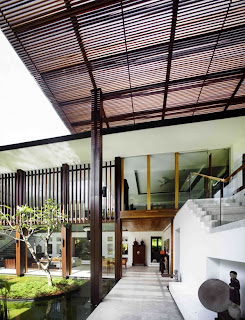Light and place
Each place on this earth has a distinct characteristic that places it apart form one another. All the factors that make up each place give it its individual beauty. Those features give a face to the environment and region. Some of the main elements that play a big role are the geography and the way the natural light connects with it. It combines, reflects, shines, darkens, or consumes each other. Light and place not only combine to make beautiful patterns, shadows, and bring out beautiful colors it also inspires and molds the way buildings are designed for that certain region. A great example is the way the Japanese use “Shoji” paper paneled doors. They are used to provide comfort in the most difficult season. The panels are opened in certain ways to let the breeze come in while at the same time shielding from the sun. The light molds the place and yet the place can mold how much light it will let in. Depending on the place we build according to it and according to how and where the light hits.
Light and Nature
There is a line in the reading that stood out to me that says, “Images of light in nature can be used as powerful models for designing the luminous qualities of rooms.” (pg.15) In my opinion nature is the model for so many things. It brings so much inspiration to us as far what we can do with light and design in general. The way light hits water and casts reflections, and when it comes through trees it forms all kinds of shapes, and when it makes blends with nature creates all kinds of patterns, these are all examples of where architects and designers find inspiration today. A house that really captures nature and light is The Sun House by Guz architects. It can really be said that nature and light really blend where all the elements are combined and the house is one with natural world.
Light and Climate
The climate definitely affects each region of the world differently the climates all come in a range of moderate to intense. It is very interesting that certain styles of design developed because of this. A good example from the reading is they way the Spanish added certain patterns to their walls, roofs, and arches so that the harshness of the sun wouldn’t cause a lot of glaring to the eye. This is a great way in which these cultures adjusted to the climate and therefore found ways to deal with it very creatively and at the same time very beautifully.
Light time and task
Light contributes to so much of our world; it serves many functions and one of those big ones is time. Over the course of history it has been what we use to let us know how to divide our day and keep up with this issue called time. I for one don’t have curtains in my room and as soon as the light starts pouring into my room I know it has to at least be 8 am. This definitely ties in with task. Tasks are usually done in light, some done only during the daylight. I see the importance of light to come through in places of task like a library. Once again light shapes and mold spaces.
Although all these are different functions that light serves, they overlap and some go hand in hand with each other. Light is experienced everyday and like the reading said usually when there isn’t enough of it is when we notice it the most. Its role is definitely essential to our daily lives.






